 Acquiring new clients is a priority of every business. To do this, businesses will offer special deals, BOGO items, free item with minimum purchase, etc. These things definitely catch my attention, that is, when we are talking about ketchup or oil changes. When it comes to more important things, I find myself running from these advertised "deals". You see, when I really care about the quality of something, no amount of discount is going to persuade me to use a service or product. I begin to see these offers as a business "begging" me to become their client, because the quality of their work isn't enough to bring me in. In our industry, a frequent way to gain new clients is by offering a free evaluation or test (whatever you may call it). Initially it sounds like a great idea, I mean who wouldn't want a free service for their dog? You think, once they see how amazing your place is after that first time, surely they'll come back, right? Well....maybe. Below I'll list why I feel it is important to charge for that first visit. 
 And the most important reason to charge.....YOUR TIME and KNOWLEDGE! A lot goes into truly evaluating a dog's potential success in daycare. Here's just some of what goes into our evaluations.
 How much to charge? Deciding how much to charge will depend on what your evaluation consists of. Are your evaluations really just meet-and-greets with a staff member and one dog or is your evaluation several hours? Does it include any goodies for the client to take home or not? Is it more labor intensive than a regular day of daycare (it should be), then it should cost more than your basic daycare price. The only negative I find with charging for evaluations is losing the client that is simply looking for the easiest cheapest option. To me, that's not a negative at all. That person doesn't fit my description of the ideal client and it shouldn't for you either. (Additional Note: We do sometimes offer the occasional free evaluation if it is suitable for the situation. It's rare, but when excellent customer service calls for it, we'll do it. For example, if we have a young dog whose owners had to board him unexpectedly at last minute and, as we get to know the dog in our private room, we see that he has the perfect temperament to enjoy social play, at pick-up we may offer a free evaluation as a thank you for boarding with us and "hey, come see how much fun your dog can have." It's done in a case that we have a strong feeling if the owner saw the benefits of daycare for that particular dog, we feel confident they would continue to use our services. Again, this is very rare, but I didn't want you to think offering a free evaluation for a certain reason isn't a good idea. I'm always up for those little above-and-beyond random acts of great customer service when appropriate.)
1 Comment
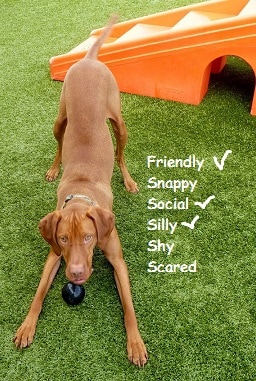 For 15 years we called our first day evaluation a "Temperament Test". It was catchy. Both words started with a "T"; it rolled off your tongue easily. All was fine with this terminology until one day my sister questioned it. We were opening a second location and were saying that dogs that attended daycare at our current location would have to do another temperament test at the new facility. It made perfect sense to me, the dogs had never been to that facility before, never met the staff, never met that particular set of dogs. Yep, total sense. My sister however didn't agree. "If I were a client I'd get mad having to do another temperament test. I mean you already know my dogs temperament from the other location. He's not going to change just because he's in a different building." I responded, "Yes, but, he needs to get used to the new place. I don't want to just throw him into a completely different environment and expect him to be fine right off the bat. I want to do the introduction slowly and make sure that he is comfortable with all the dogs there and gets used to the new layout." "Well," she said, "I get that, but you don't need to test his temperament again." Hmm....did my sister have a point? What we were actually doing had nothing to do with his temperament at all. We wanted to see how he responded to our particular environment. Doesn't matter how his temperament is at home, at the park, on a walk, at another doggie daycare. It only matters how he reacts in our playgroups. When I explained it to her, and to many clients previously, I'd say that we were really seeing "if he is compatible with daycare". When we would dismiss a dog we would never say, "His temperament is just horrible. He's aggressive and shouldn't be around other dogs." No. We would say, "He's just not compatible with our daycare environment." What a big difference. If that's really what we were doing then why not call it the correct name? So after 15 years of calling our first day evaluations "Temperament Tests", we changed the name to "Playgroup Compatibility Evaluations". Doesn't roll off the tongue quite as nice but it definitely reflects what we are really doing. You can actually purchase the forms we use for our passed evaluations, failed evaluations and dismissals on our products page. They are wonderful tools for staff to assess dogs and to communicate behaviors to clients.  I hate when we have to notify an owner that they dog was injured while in our care. What makes it worse? Not knowing how the injury happened. Yes, I know that there are going to be the occasional bumps, bruises, and scratches. I don't like it when it happens but I understand. We are an amazing facility, with extensive training, non-stop supervision, so when an injury happens we can quickly assess what happened, make changes to our groups, dismiss dogs, or even change procedures to prevent it from happening again. BUT when you don't know what happened...you can't do that. Example Situation: Staff member was doing health checks before letting the dogs out to play for the day. They had been out only once that morning for a quick potty break as a group, then put back into their rooms. She found an injury. Not a small one, a good size tear (about 1/2" long) on the side of a large short haired dog. What?! He's a laid back dog, hadn't been involved in any altercations, hadn't shown signs of being injured, what in the world happened? Our only answer was that he somehow got injured on a piece of equipment. The staff searched every inch of the playroom. A few bolts in the chain link stuck out a bit far. Did he hit the fence in such a way that a bolt tore his skin? We took him to the vet, no stitches, just antibiotics, and covered the bill due to the mysteriousness of the injury. When his dad arrived a few hours later we still didn't have an answer. I assured dad that we wouldn't stop investigating until we found an answer. He could tell by our concern for his dog and our concern about not knowing, that we really cared about what had happened. No excuses, no comments like, "well, you know there are risks associated with letting dogs play together." No. Just simple truth and genuine concern for both the dog and a strong desire to figure out what happened. 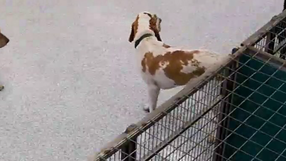 I dove into the footage. I watched the night before until I was convinced that it didn't happen then. I could see where the injury was and could tell that nothing was there yet. Moved on to footage from the morning. As I watched, I saw that sweet dog. A laid back hound that loved sitting around watching everyone and following the staff around for a little affection. He wasn't rowdy in the least. I was watching during the first morning group let-out. They were outside for only about 15-minutes for a quick potty break. Their group supervisor standing with them the whole time. A golden and a lab start playing a little too rough for the supervisor's liking so he stepped in to moderate. They were noisy and rowdy causing the other dogs in the group to take notice and run to the scene. Our sweet hound was just standing near the action not thinking much about it. Next thing I see is a black dog charge at him and bite his side. It appears as though the black dog had heard the commotion and ran to see what was happening with guns blazing. His first point of contact in this heightened state was our poor hound's side. It happened in a quick second. Had I witnessed only that I wouldn't have thought any injury was possible. It was the sweet hound walking to the side, sitting down and licking his side that gave me the clue and had me zero in on the few seconds before. The group supervisor was literally 2-feet away, actively supervising, but was none the wiser. It drew no attention compared to the rowdy play of the golden and lab. No one but the spitfire black dog was at fault. The solving of the mystery was bittersweet. We knew the answer to what happened while having to dismiss another daycare member. I was happy to call dad and tell him what happened. I explained all that I did to investigate, exactly what I saw, invited him to come watch it with me so that he could see how quick it had happened (he didn't take me up on it), told him the action we were going to take with the other dog. Though no fault of our own, I made it clear how bad I felt about the situation. Dad would say, "We know these kind of things can happen." To which I'd reply, "Yes, but I never want you to have to come back from vacation and deal with this. He is such a sweet laid back guy I feel horrible for him." I told him to keep in touch with me if the injury worsened and that I'd be in touch with him regardless to check up. He was kind and understanding. I will make sure to follow up and will continue to cover any vet bills associated with the incident. This is simply goodwill. What if I didn't see what happened? What about those times when you never find an answer? Things to keep in mind with mystery injuries:
It's hard to say, but I feel mystery injuries are always the fault of the facility. No, I don't mean that the facility did anything wrong. Like in this case, we weren't negligent in any way. BUT to owners, it is your fault and they are correct to assume that. If you can't give them an answer as to what happened you have to question your policies, procedures, supervising rules, etc. Cover any vet bills and make sure you nor your staff ever have the attitude of "oh well, can't figure it out." Any injury you can't figure out will happen again. Like I say with all "bad things", the second this injury happens begin your work to "WOW" the client. This is my challenge to you. |
amanda CrookInsights and Tips for Dog Daycare Owners Archives
November 2019
Categories
All
|
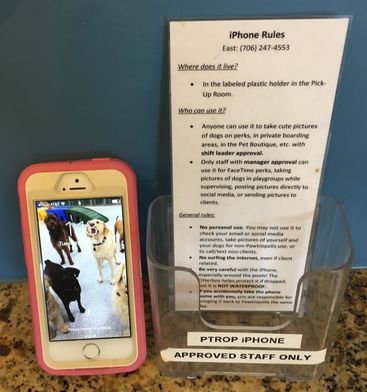
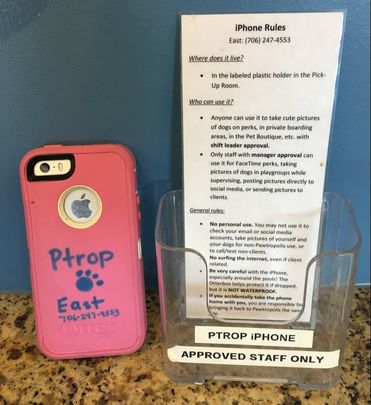
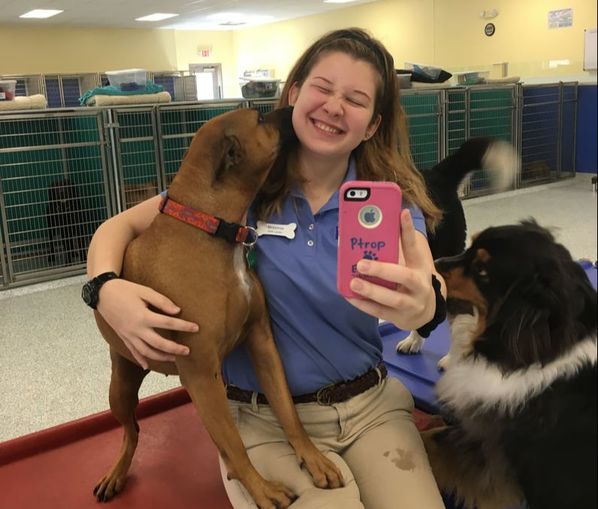
 RSS Feed
RSS Feed